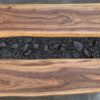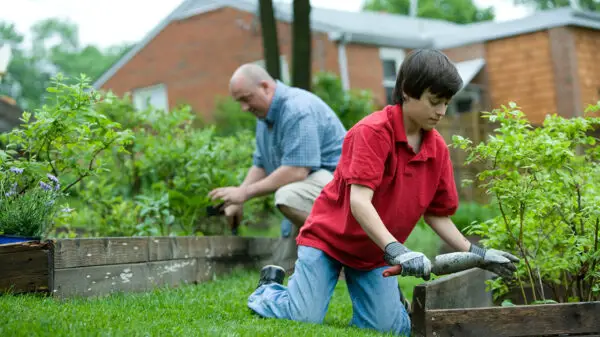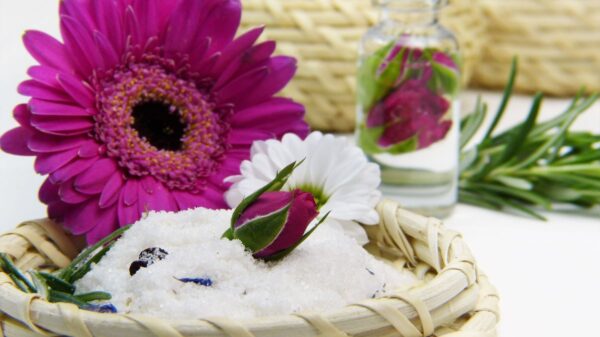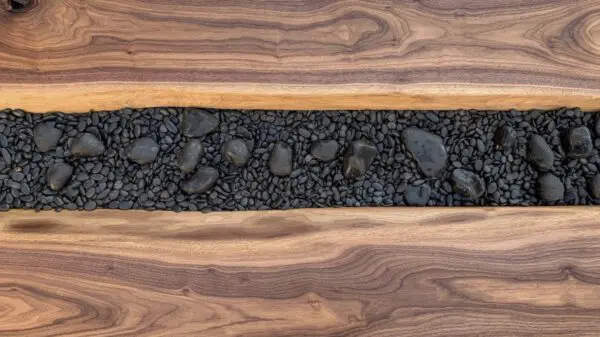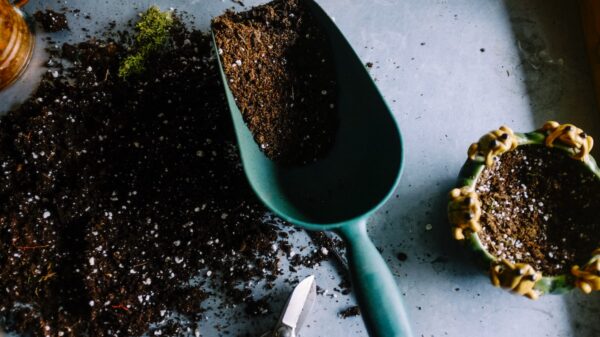While we are having a rather hot summer, fall is just around the corner, and winter is not too far after. There are things we can do to avoid having your plants freeze this Winter. One thing to do is to water your plants thoroughly a week or two before the first freeze is expected. This will help insulate them against the cold. Here are all of the other ways how to keep plants from freezing:
- Choose What Plants Will Hold Up In Cold Weather
- Your Plants Need To Go In Frost-Resistant Areas
- Avoid Frost Pockets
- Harden Off Just Sprouting Plants
- Before Evening Cover Your Plants
- Use Water Jugs For Warmth
- Water Before The Frost Hits
- Potted Plants Should Be Brought Indoors
There are quite a few methods to incorporate to ensure the safety of your plants this winter. Planning and getting supplies early is always a good idea and right now those needed materials might be a little cheaper.
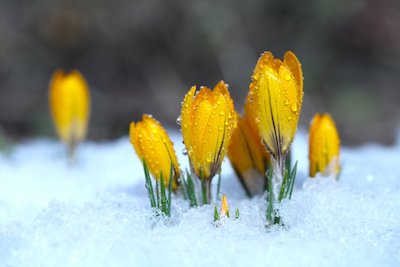
Top 8 Ways To Stop Your Plants From Freezing
Right now the temperature ranges from 80 – 100 degrees. It is summer. so we are not thinking about the freezing temperatures. We are not thinking about the cold weather challenges: shielding delicate newborn growth from freezing, protecting against freezing, root damage, frost cracks in the bark, and frosts are all possible consequences of severe temperature drops. It never hurts to prepare for cold weather freezes.
Here are 8 easy, practical methods I’ve used to reduce frost’s impact on my garden:
1. Choose What Plants Will Hold Up In Cold Weather
The cold is a tough adversary for certain vegetables and flowers, which survive (or flourish) despite it. Because they can endure some degree of short-term freezing, such plants are called “hardy.”
- Plants that are destroyed or severely damaged by freezing temperatures are referred to as “tender,” whereas plants that perish due to sub-freezing temperatures are said to be “sensitive.”
- Tender plants, such as impatiens (Impatiens walleriana) and begonias (Begonia spp.), prefer warm weather and will not survive a light frost.
- Many vegetables such as tomatoes (Solanum Lycopersicum), peppers (Capsicum Annuum), and eggplants (Solanum melongena) are also tender.
Crocuses frequently break through the snow to bloom; and a spring storm rarely keeps narcissus, tulips, grape hyacinths, or pansies from blossoming.
There are Several Palatable Edibles that Resist Frost, Including:
- Broccoli, Cabbage, Calendula (pot marigold), Carrots, Chives, Lettuce, Leeks, Peas, Radish, Spinach, Swiss chard
Here Are Some Plants That Are Frost Sensitive
- Edibles, such as citrus fruit, tropical plants, tomatoes, pumpkins, sweet potatoes, cucumber, okra, eggplant, corn, and peppers are among edible plants.
- Cherry trees and azaleas bloom in early spring. Rhododendrons blossom in late fall. Edible perennials include canna, elephant’s ear, and gingers.
2. Your Plants Need To Go In Frost-Resistant Areas
When the mercury plummets, it’s important to give your plants a leg up by placing them in protected microclimates. In general, the sunniest and windiest locations are the most hazardous to frost-sensitive plants; the shadiest and calmest areas are the safest.
- A south or southwest wall that reflects onto plants is ideal. Be aware that trees and shrubs planted too close to the building make things worse by casting a frosty shadow or blocking heat emanating from the structure.
- If this is the case, simply move your plants a few feet away from the house. Mulching around your plants before the first frost will help to protect their roots from the cold.
Be sure to pull the mulch back a bit from the stems of your plants so that they do not touch the mulch, as this can cause stem rot. A layer of straw or leaves around your plants will also help to insulate them against the cold.
3. Avoid Frost Pockets
Frost pockets are areas that are prone to frost because of the way they are situated. Low-lying areas, such as valleys and depressions, tend to accumulate cold air, which can lead to frost.
To avoid these frost pockets, plant your sensitive plants on slopes or hillsides so that cold air will drain away from them.
Define Frost Pockets
Frost generally occurs on clear and calm nights, when there are few to no clouds to reflect the ground. The cold air then settles down to the lowest point, while the hot air rises up and away from the ground.
- During those frosty evenings, even if the thermometer on your dashboard does not show below freezing, frost can form.
- Ice crystals may form on plants any time the air temperatures at ground level are below 32°F.
- This prevents fluids in the plant’s tissues from being watered and drying out.
- Leaves damaged by frost blacken or shrivel as they dry out.
Frost pockets are real, and they can wreak havoc on your plants if you’re not careful! Be sure to take steps to protect your plants from these cold traps.
4. Harden Off Just Sprouting Plants
Young plants are hardened off gradually, exposing them to the wind, sun, and rain to toughen them up. This prevents transplant shock, which is defined as seedlings that grow slowly, become dwarfed, or die suddenly due to losing too much water when exposed to the elements.
- You can harden off your plants by placing them outdoors in a sheltered spot for a few hours on the first day.
- The next day, gradually increase the amount of time they spent over a week.
Be sure to bring them inside at night during this process. After a week or so, your plants should be ready to withstand the rigors of outdoor life.
What Is a Good Time to Start Hardening Off Your Young Plants?
To prepare for planting outside, begin the hardening-off process seven to fourteen days before your seedlings will be set out. Also, make sure that the area will be ready for the seedlings, by landscaping around your yard signs and other decors you have out. Additionally, most seedlings are now grown in the spring after the last frost date.
- Cold-hardy plants, on the other hand, may be planted outdoors two to four weeks before the final frost date.
- It is important to remember that the length of time a seedling needs to harden off is determined by the type of plants being cultivated, as well as outdoor temperatures.
Be flexible in your hardening-off procedures and expect to whisk them indoors or cover them if a late spring freeze or snow is on the way.
5. Before Evening Cover Your Plants
It is important to remember that if you are going to cover your plants, cover them before a hard freeze and do it early in the day. If you wait until night to cover them, most of the heat stored in your garden will have dissipated, and your plants may not survive.
- Make sure your cover extends down to the ground on each side, regardless of whether it’s for soil or mulch.
- Make sure there are no holes where warmth can escape.
- If you have the option, use stakes to keep material from touching the leaves.
- Do not fasten or collect your cover to the tree trunk; doing so will prevent the release of gasses that are necessary for photosynthesis.
Remove the covers in the morning after the frost has thawed. If you don’t remove the covers, the plant may restart growing actively, making it even more vulnerable to frost damage in the future.
To Protect My Plants, What Do I Cover Them With?
It is also vital to remember that, while covers are not required to be complicated or costly, they do not have to be. A line of sticks with newspaper, cardboard, or sheets and towels tented over them will also suffice. If you don’t have any sticks, lay the cloth directly on top of your plants instead. This will protect them from the cold air.
6. You Can Use Water Jugs For Warmth
Water jugs can be used to create a microclimate around your plants. Place plastic water jugs in the sun and fill them with water all day, allowing them to absorb heat during the day.
- Set the jugs around your plants before nightfall and cover them with a blanket.
- The warmth generated by the water in the jugs will keep your plants warm throughout the evening.
- Do not, however, allow the water in the jugs to come into contact with the plants themselves, as this could lead to scalding.
7. Be sure To Water Before The Frost Hits
It may sound strange, but watering the night before a spring frost can help plants survive. Moistened soil will release moisture into the air during the night, raising the temperature and keeping plants warmer. Do not, however, water your plants in the morning, as this will make them more susceptible to frost damage.
If it isn’t going to rain before the freezing temperatures arrive, you should water your plants well. Because the wet ground is warmer than dry ground, this is true. Watering the grass and plants at night will insulate their root structure, reducing the risk of cold damage. The water gives an extra layer of protection from the cold air.
Should you water plants after a frost?
Watering your plants is one of the most effective post-frost care techniques. If you are worried about the frost returning and damaging your plants, even more, you may be hesitant to water them.
- When the roots of plants have frost damage, they do not have the capacity to drink in moisture in frozen ground.
- They will need some water to assist in getting them nutrients for growth.
- When you pour a little water right after a frost, this might assist to thaw the ground out somewhat.
- The most essential thing to remember following a frost is whether the interior temperature of your plants has dropped too far.
Most damage is done to your plants during this time. It’s always a good idea to cover your plants with a blanket before a freeze if you’ve looked up the weather.
8. Potted Plants Should Be Brought Indoors
Bring inside planters and hanging baskets once it’s forecasted that frost is coming. Potted plants are subjected to greater temperature changes than those planted in the ground.
- They’ll also spend long periods at lower temperatures, so it’s important to bring them inside before the frost arrives.
- Potted plants are particularly vulnerable to root damage owing to the cold, which is why they’re so susceptible to frost damage.
- It may cause the roots of potted plants—particularly those near the outer edge of the container—to become spongy and black.
- Although root damage can be fatal, it will slow down growth.
- Make sure that any potted plants you bring inside don’t have insects or diseases on them, and aren’t currently experiencing any problems.
- This will not only exacerbate the situation but may also infect your other plants.
If you’re covering a hanging basket, rather than bringing it in, place the cover on the ground first, then over the basket so you can take advantage of the ground’s comparative warmth.
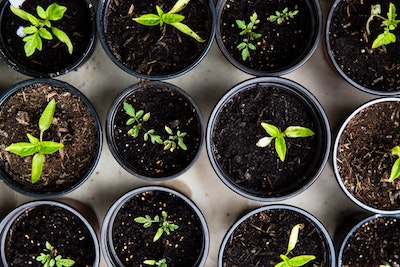
Here Are Some Frequently Asked Questions:
Will a frost kill my plants?
- It depends on the type of plant and how cold it gets. Some plants can withstand light frosts, while others will die at the first sign of cold weather.
What is the difference between a freeze and a frost?
- A freeze occurs when the temperature dips below 32 degrees Fahrenheit for a sustained period, while a frost occurs when the temperature falls below 32 degrees Fahrenheit but does not stay there for long.
What is the best way to protect my plants from a freeze?
- The best strategy to preserve your plants from a freeze is to move them inside or cover them with a tarp, fabric, or frost cloth.
How can I tell if my plants have been damaged by a freeze?
- If your plants have been damaged by a freeze, you may notice wilting, browning, or blackening of the leaves; the flowers may also appear to be dead. In some cases, the plant may die completely.
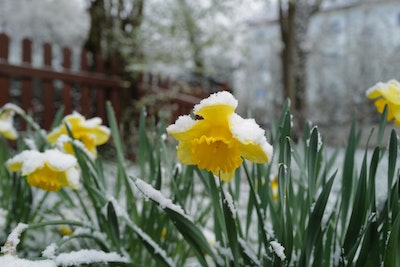
Conclusion
Protecting your plants from freezing temperatures doesn’t have to be difficult. By following the tips above, you can keep your plants healthy and happy all winter long. You do have to do some preparation work before the colder weather hits. It will be worth it when your plants are still blooming come springtime. Hardening off your plants, covering them with fabric or tarps, and bringing potted plants indoors are all effective methods of frost protection.
Watering your plants the night before a frost is also helpful in raising the temperature and keeping plants warmer. The last thing that you would suspect is that your plants have been damaged by a freeze. It is important to check for wilting, browning, or blackening of the leaves. If you see any of these signs, your plant has likely been damaged. They will need to be replaced. Remember, there are professionals around to help at the nearest plant or hardware store.





